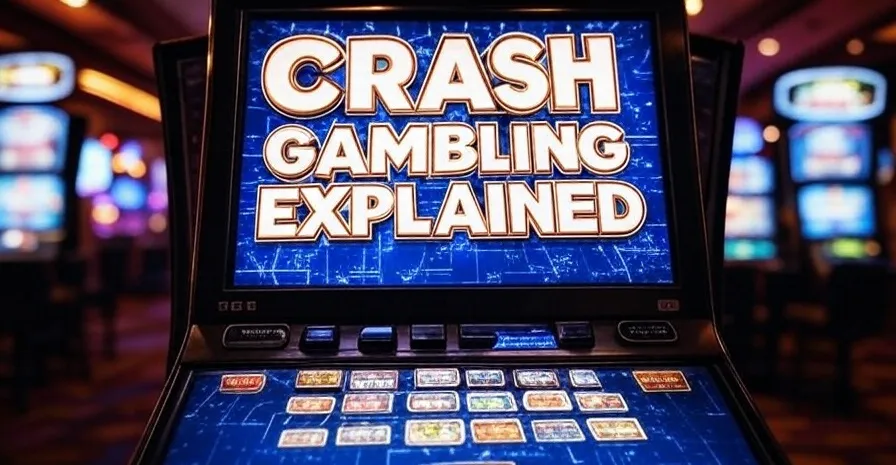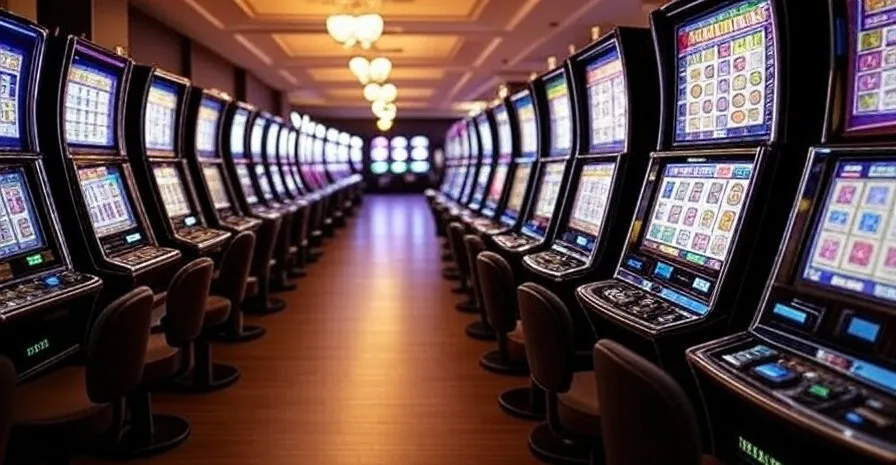Welcome to the captivating world of roulette, a timeless casino game that draws players with its blend of simplicity and thrill. In this article, we’ll break down the structure of the roulette table and wheel, uncover how many numbers are in play, and highlight the critical differences between American and European versions. Whether you’re a beginner or a seasoned player, mastering the roulette table layout will empower you to make smarter bets and elevate your gaming experience. Let’s dive into the essentials of the casino roulette table and wheel to set you up for success.
Overview of the Roulette Table
The roulette table is the heart of the game, where players place their bets in hopes of predicting where the ball will land on the spinning wheel. Understanding the roulette table layout is key to making informed betting decisions and boosting your chances of winning.
At first glance, the casino roulette table may seem complex with its grid of numbers and various betting options, but it’s quite straightforward once broken down. The main feature is the betting grid, displaying numbers 1 through 36, arranged in three columns of twelve numbers each. At the top of the grid, you’ll find the zero (or zeros in American roulette: 0 and 00).
The grid is divided into two main betting areas: inside and outside bets. Inside bets focus on specific numbers or small groups of numbers, offering higher payouts but lower odds. Common inside bets include:
- Straight bet: A wager on a single number, offering the highest payout (35:1).
- Split bet: A bet on two adjacent numbers, placed on the line between them.
- Street bet: A wager covering three numbers in a row.
- Corner bet: A bet on four numbers that meet at a corner.
Other inside bets, like the six-line bet, cover six numbers across two rows.
Outside the number grid, you’ll find areas for outside bets, which cover larger groups of numbers and offer better odds but smaller payouts. Popular outside bets include:
- Red/Black: Betting on the color of the winning number.
- Odd/Even: Wagering on whether the number will be odd or even.
- High/Low: Betting on whether the number falls in the 1-18 (low) or 19-36 (high) range.
- Dozens: Betting on one of three groups of 12 numbers (1-12, 13-24, 25-36).
- Columns: Wagering on one of the three columns of numbers.
Some casino roulette tables, especially in European and French versions, feature a racetrack—a circular layout mimicking the wheel’s number sequence. This simplifies placing call bets or neighbor bets, which cover specific wheel sections.
While the core roulette table layout is similar across variants, there are notable differences. For instance, the American casino roulette table includes both 0 and 00, impacting the house edge, while the European table has only one zero. French tables, which use the same wheel as European roulette, often feature unique labeling (in French) and additional rules like La Partage or En Prison, which can further influence odds.
Mastering the roulette table layout is essential for any player aiming to develop a strategic approach. In the following sections, we’ll explore the wheel, the number of roulette numbers, and how American and European layouts differ.
Inside the Roulette Wheel
The roulette wheel is the iconic centerpiece of the game, a spinning disk that holds the fate of every player’s bet. Understanding its structure and the arrangement of roulette numbers is crucial for grasping how the game works and why certain bets carry specific odds.
A standard roulette wheel consists of a spinning disk with numbered pockets around its edge. These pockets are where the ball lands after the wheel is spun. In European roulette, there are 37 pockets, numbered from 0 to 36. The zero pocket is green, while the remaining numbers alternate between red and black. In American roulette, an extra pocket—double zero (00), also green—brings the total to 38 pockets.
The roulette numbers on the wheel are not arranged sequentially. Instead, they follow a specific pattern designed to balance high and low numbers, odd and even numbers, and red and black colors as evenly as possible. This arrangement ensures that each spin’s outcome is random and unpredictable.
For example, on a European wheel, the sequence starting from 0 is: 0, 32 (red), 15 (black), 19 (red), 4 (black), 21 (red), 2 (black), and so on. Notice the alternating colors and mix of high and low numbers. On an American wheel, the sequence includes the 00 and differs: 0, 28 (black), 9 (red), 26 (black), 30 (red), and so forth, maintaining the alternating color pattern.
The presence of the double zero in American roulette is a significant difference, as it increases the house edge. In European roulette, the house edge is 2.70%, while in American roulette, it nearly doubles to 5.26%. This is why many players prefer European roulette for better odds.
French roulette uses the same wheel as European roulette, with a single zero. However, it often includes special rules like La Partage or En Prison, which can further reduce the house edge on even-money bets, making it even more player-friendly.
Roulette wheels are meticulously engineered and balanced to ensure each spin is independent and random. Modern wheels are designed to minimize bias, making it nearly impossible to predict where the ball will land based on past spins.
Understanding the roulette wheel’s layout and how it varies between versions is vital for players to make informed decisions about which game to play and how to approach their betting strategy.
How Many Numbers Are in Roulette?
A fundamental question for any roulette player is: how many numbers are there on a roulette wheel? The answer depends on the variant you’re playing.
In European and French roulette, there are 37 roulette numbers: 1 through 36, plus a single zero (0). The zero is unique because it doesn’t fall into categories like red/black, odd/even, or high/low, affecting certain bets.
In American roulette, there are 38 roulette numbers: 1 through 36, zero (0), and double zero (00). The additional double zero increases the total possible outcomes, which impacts the odds and the house edge.
A less common variant, known as Triple Zero roulette, features 39 numbers: 1 through 36, zero (0), double zero (00), and triple zero (000). This version is even more favorable to the casino due to its higher house edge and is rarely found.
On the casino roulette table, the betting grid reflects these numbers. In European roulette, the grid includes spaces for 1-36 and 0, while the American version adds 00. The table also features areas for outside bets, covering larger groups of numbers like dozens or columns.
Knowing how many numbers are there on a roulette wheel is critical because it directly affects the probability of winning and the payouts for different bets. For instance, in European roulette, the odds of hitting a specific number are 1 in 37, while in American roulette, they drop to 1 in 38.
The presence of zero(s) gives the casino its edge. When the ball lands on zero, most bets lose unless specifically placed on the zero. In American roulette, with two zeros, this effect is amplified, making it less favorable for players.
Thus, understanding how many numbers are there on a roulette wheel and how this varies across versions is essential for choosing a game and calculating your winning chances.
Number Arrangement & Distribution
The arrangement of roulette numbers on the wheel is not random; it’s carefully designed to balance various attributes, ensuring the game remains fair and unpredictable.
In both European and American wheels, numbers are arranged to:
- Alternate colors: Adjacent numbers have different colors (e.g., red next to black).
- Balance high and low numbers: The wheel alternates high (19-36) and low (1-18) numbers as much as possible.
- Distribute odd and even numbers: The layout aims to balance odd and even numbers around the wheel.
Perfect balance isn’t always achievable due to the odd number of pockets.
On a European wheel, starting from 0, the sequence is: 0, 32 (red), 15 (black), 19 (red), 4 (black), 21 (red), 2 (black), and so on. This shows alternating colors and a mix of high and low numbers. On an American wheel, the sequence includes 00: 0, 28 (black), 9 (red), 26 (black), 30 (red), and so forth, maintaining similar principles.
A key difference is that in American roulette, the 0 and 00 are positioned opposite each other on the wheel, unlike the European wheel’s single zero.
This arrangement matters for certain bets, particularly in European and French roulette, where players can place “neighbor” or “section” bets based on the wheel’s layout. For example, the “Voisins du Zero” bet covers a series of numbers around the zero on the wheel.
Understanding the number distribution can also help players who believe in wheel biases or patterns, though modern casino wheels are regularly tested and maintained to prevent any bias.
Overall, the distribution of roulette numbers on the wheel is a critical aspect of the game’s design, contributing to its randomness and excitement with every spin.
American vs European Layouts
When it comes to roulette, the two most popular variants are American and European roulette. While they share similarities, key differences in their layouts significantly impact your gaming experience and odds of winning.
Wheel Layout
- European Roulette: The wheel has 37 pockets, numbered 0 to 36. The zero is green, with the remaining numbers alternating between red and black.
- American Roulette: The wheel has 38 pockets: 0, 00, and 1-36. Both zeros are green, with other numbers alternating red and black.
The addition of the double zero in American roulette is the most significant difference, increasing the number of possible outcomes and affecting bet probabilities.
Table Layout
- European Roulette: The betting grid includes numbers 1-36 and a single zero (0).
- American Roulette: The grid includes 1-36, zero (0), and double zero (00).
The double zero on the American casino roulette table introduces additional betting options, such as the “top line” bet, covering 0, 00, 1, 2, and 3.
House Edge
The house edge is a critical factor. In European roulette, it’s 2.70% for most bets. In American roulette, the double zero increases it to 5.26% for most bets. This means players are likely to lose more over time in American roulette compared to European.
For example, a straight bet on a single number in European roulette pays 35:1 with a 1-in-37 chance of winning. In American roulette, the payout remains 35:1, but the odds drop to 1 in 38, making it less favorable.
Recommendation
Given the lower house edge, players are generally advised to choose European roulette over American when possible. The difference in odds can significantly impact your bankroll over time.
Some casinos may offer variations or special rules that alter the house edge. For instance, certain American tables provide a “surrender” rule, reducing the edge on specific bets. Always check the specific rules of the table you’re playing at.
While both American and European roulette offer thrilling gameplay, the European variant provides better odds due to its single-zero layout. Understanding these differences can help you make informed choices and potentially improve your chances of winning.
Practical Tips for Table Selection
Choosing the right casino roulette table can significantly influence your gaming experience and chances of success. Here are practical tips to help you select wisely:
- Opt for European or French Roulette: Whenever possible, choose European or French roulette over American. The single zero in these variants offers better odds than the double zero in American roulette. If you find a French table with La Partage or En Prison rules, even better, as these reduce the house edge on even-money bets.
- Understand the Table Layout: Familiarize yourself with the roulette table layout before playing. Knowing where to place chips for different bets will help you act quickly and confidently during the game.
- Check Table Limits: Every roulette table has minimum and maximum bet limits. Ensure the table aligns with your budget. If you’re a beginner or on a tight budget, look for tables with lower minimum bets.
- Observe the Game: Before joining a table, take a moment to watch the game. Observe how the dealer spins the wheel and drops the ball. While modern wheels are designed to eliminate bias, some players believe certain dealers have consistent spin patterns, though this is largely a myth.
- Consider Casino Reputation: Whether playing online or in a brick-and-mortar casino, choose reputable establishments known for fair play and excellent customer service. This ensures you’re playing on well-maintained equipment and that winnings are paid out promptly.
- Leverage Bonuses and Promotions: If playing online, look for casinos offering bonuses or promotions for roulette players. These can provide extra value and extend your playtime.
- Practice with Free Games: Many online casinos offer free roulette games where you can practice without risking real money. Use these to get comfortable with the roulette table layout and test betting strategies.
By following these tips, you can select a roulette table that suits your preferences and maximizes your chances of success. While luck plays a significant role in roulette, making informed decisions can help you manage your bankroll and enjoy the game more fully.































